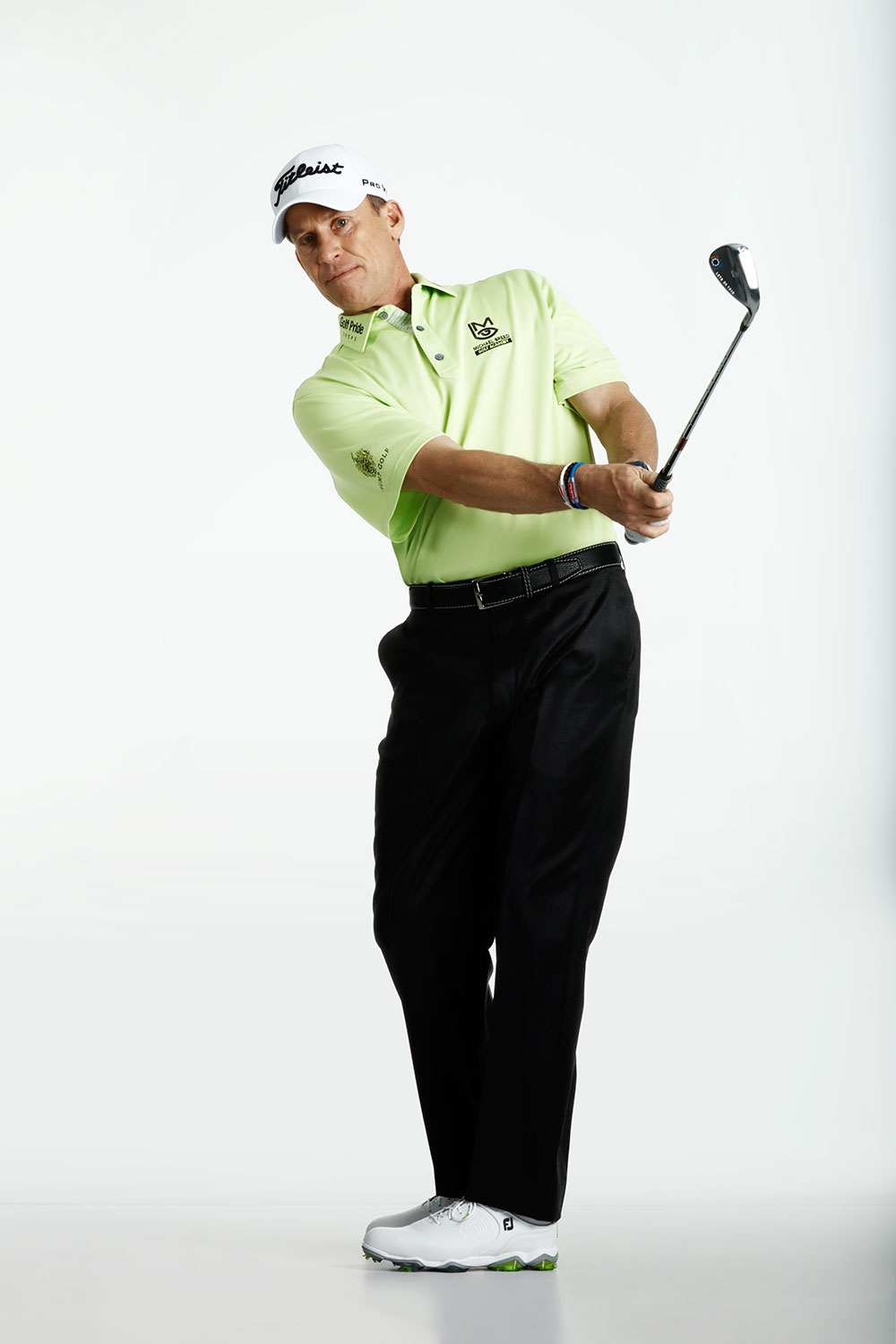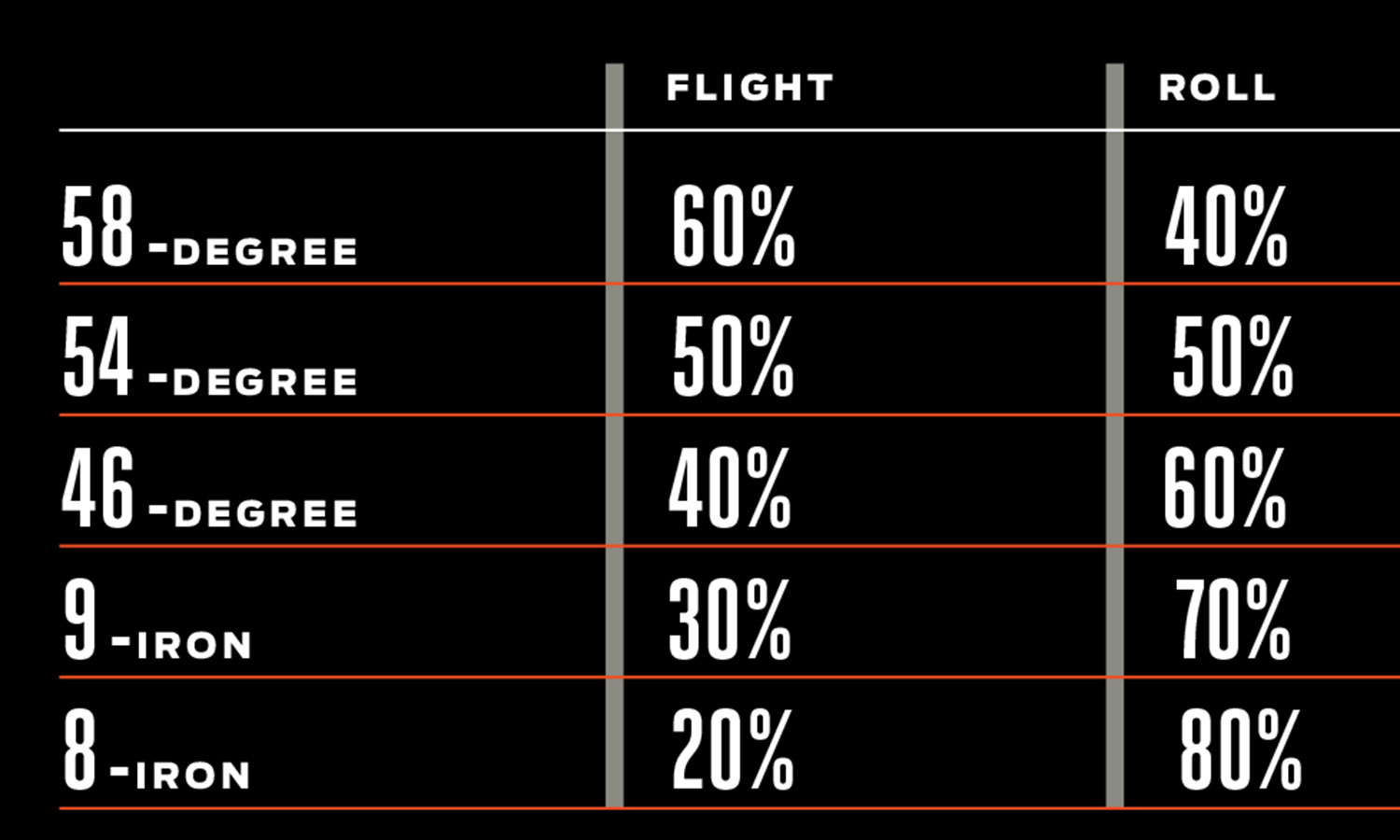My first year as a head pro, I gave a clinic one afternoon on chipping. After we finished, a student came up to me and said, “I didn’t like that. You never told us what club to hit on those shots.” Even though I was a novice teacher, I got it right that day. I could’ve told her what I would do in those spots, but she would’ve tried to memorise that and not discover it for herself. The right way depends on the golfer – the shots you like, your comfort level in different situations, the clubs you have confidence in. It’s not one-size-fits-all.
In this article, I’m going to give you a few mechanical keys for playing around the greens, but then encourage you to try different variables that affect the shots you hit – variables that alter trajectory, distance, spin and roll. So it’s part mechanics and part feel. If I gave you only mechanics, you’d be a robot and not very good at reacting to situations on the course. If I said it’s all feel, you’d have no starting point – no structure. My goal is to get you started, then set you on a path to self-discovery. A great short game is not given; it’s learned. Learned by practising a few musts, yes, but mostly through experimentation.
Let me put a bow on my story. Months later, the woman came back and said she understood what I was doing. She had developed a system for picking clubs and playing shots. She owned her short game – and so will you.

part of the short game: swing the grip around to your front hip. Don’t push it towards the target.
1. Swing The Handle To The Hip
The first skill to learn in the short game is swinging the grip end of the club to the left through impact. This might seem oddly simple, but it’s absolutely critical. Swinging directly towards the target, which so many amateurs do, causes poor contact because the low point of the swing comes behind the ball. It also causes deceleration, because the club runs out of room going straight. Poor contact and deceleration are killers around the green.
Swinging the handle to the left moves the low point of the swing forward, so you hit the ball and then the ground. It also helps you make contact with the centre of the face. And then there’s acceleration. You’re creating more space for the club to travel. Swinging left is the master move of the short game.
So how do you do it? Get in your normal chipping setup, and practise swinging the handle through so it finishes very close to your front hip. I call this “holstering the handle,” as if you were sticking the grip in a holster on your front hip [opposite page]. Another way to think about it is that the heel pad of your right hand leads the knuckles at the top of the hand as you swing through. (You can focus on the left hand the same way – heel leads knuckles.) If swinging through this way feels strange, it’s because you’re used to pushing the handle towards the target, which seems logical for a lot of golfers. But you have to get the handle going left.



2. Pre-Set Trajectory in the Set-Up
The next piece of the short game is how high you set the handle at address. This allows you to vary trajectory. Put simply, when the handle is high, you hit a lower shot; when the handle is low, you hit a higher shot. Let’s discuss.
Wherever you set the handle, the clubface will find its natural loft. Unless you manipulate it, the face will open or close so the sole of the club sits flush to the ground. If you raise the handle, the heel comes up so you have to close the face to get the sole to sit flush. If you lower the handle, the toe comes up so you have to open the face to get the sole flush. Closing the face produces a low shot; opening it produces a high shot. That’s how handle height affects loft.
These variations cause changes to the stance as well. The more you raise the handle, the closer you have to get to the ball and the more you grip down. The more you lower the handle, the farther you stand back and the longer you hold the club. I teach three positions: standard [centre left], handle high [top left] and handle low [bottom left]. Try them – they produce very different shots.
Final point: Handle position also helps you from different lies. If the ball is down in the grass, you need more dig. You get that from a closed face or a high handle. If the ball is sitting well, you can drop back and use more loft with an open face or a low handle. Now you’re building sophistication into your short game.
3. Have A Plan Before You Pick A Club
Now we need to add the most obvious variable for hitting different shots: club selection. Why didn’t we start with this? Because to be a good short-game player, you first have to understand how to hit the ball solid – that’s the handle going left. Then you have to know how the setup affects the shot – that’s handle height and the angle of the face. The next step is picking the right club for the job.
When I miss a green, I take four or five clubs to my ball. I then look at the lie, how far I need to fly the ball and the ideal rollout. Different clubs give me different flights and rolls. But that’s not where it ends. I can use any of my clubs in any of the three setups we discussed – standard, handle high, handle low – to hit at least three different shots per club.
There’s another piece that alters trajectory, and for that we go back to Lesson 1: swinging the handle left. You always want to swing it left, but how sharply you go left affects how high the ball flies. Think of a highway with three consecutive left-hand exits. If you swing the handle down the first exit, it moves quickly to the left and gets very close to your left hip. That produces a higher shot. If you take the second exit, that’s the standard shot. If you take the third – still going left the same amount, just on a longer arc – that produces a lower shot. Put these exits into the mix, and the number of shots you can hit multiplies. The fun part is playing around with them.

4. Create A Framework Using Light-to-roll
On the course, you want to play with clarity. Develop a club-selection system with the standard positions. For example, with your sand wedge at the middle handle height and taking the middle left exit, how far does the ball fly and roll? For me, that’s my 50-50 shot [see my ratios, below]. Now here’s the question: To hit a higher shot, do you grab the lob wedge or do you lower the handle or go left faster? It’s self-discovery.

For consistency, use one type of ball – the ball you play with – when experimenting. And after you have flight-to-roll ratios, be willing to adjust them for course conditions, like fast greens, or the situation, like an uphill lie. You’ll get there, and remember, there’s no substitute for doing it yourself.

